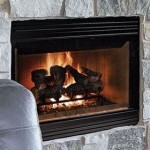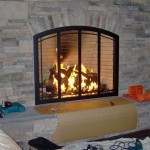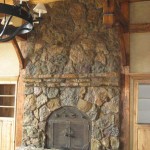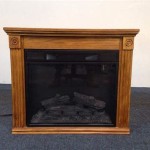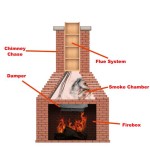Instead, structure your main points to offer a comprehensive understanding for the reader. Assume the target audience has limited to no experience with the topic.
Understanding Fireplace Insert Vent-Free Gas Logs
Vent-free gas logs, also known as ventless gas logs, offer an alternative to traditional wood-burning fireplaces and vented gas log sets. They operate without requiring a chimney or flue for ventilation, which can present several advantages for homeowners. However, understanding the specifics of these systems is essential for safe and efficient operation.
A fireplace insert, in general, is a self-contained heating unit designed to be installed within an existing fireplace opening. It effectively transforms a traditional fireplace into a more efficient heat source. Vent-free gas logs, when used within a fireplace insert, offer a specific combination of convenience and potentially improved heating performance compared to burning wood.
It is crucial to acknowledge that vent-free appliances are subject to specific regulations and safety considerations due to the nature of their operation. Understanding these aspects is paramount for a responsible approach to considering and using vent-free gas logs inside a fireplace insert.
Key Point 1: How Vent-Free Gas Logs Operate
The principle behind vent-free gas logs lies in their designed ability to burn gas (either natural gas or propane) almost completely. This near-complete combustion is what allows them to operate without a chimney. The process aims to minimize the production of harmful byproducts like carbon monoxide (CO). However, complete combustion is never perfectly achieved, and some byproducts are always released into the room.
Vent-free gas logs typically incorporate an Oxygen Depletion Sensor (ODS). This safety device constantly monitors the oxygen levels in the room. If the oxygen level drops below a safe threshold, indicating a potential build-up of carbon monoxide, the ODS shuts off the gas supply to the logs, preventing further operation and potential hazard. This is a critical safety feature common to all certified vent-free gas appliances.
The presence of an ODS does *not* negate the need for proper ventilation and carbon monoxide detectors. While the ODS is designed to mitigate risks, proper ventilation helps to further dilute any residual byproducts released during combustion, and carbon monoxide detectors provide an additional layer of protection by sounding an alarm if CO levels become dangerous.
The efficiency of vent-free gas logs is often cited as a major benefit. Since the heat generated is not vented outside through a chimney, a higher percentage of the energy produced by burning the gas is retained within the room. This can result in lower heating costs compared to traditional wood-burning fireplaces or vented gas log sets, where a substantial amount of heat escapes through the flue.
However, the heat output and overall effectiveness of vent-free gas logs can vary depending on several factors, including the size of the room, the insulation of the house, and the BTU (British Thermal Unit) rating of the gas logs. A larger room with poor insulation will require a higher BTU rating to achieve a comfortable temperature compared to a smaller, well-insulated space.
Furthermore, it's important to understand that vent-free gas logs introduce moisture into the air. The combustion process produces water vapor as a byproduct. In humid climates, this can exacerbate existing moisture problems and potentially lead to mold growth if not managed properly. Regular monitoring of humidity levels and the use of dehumidifiers may be necessary in some situations.
Key Point 2: Installation Considerations for Vent-Free Gas Logs in Fireplace Inserts
While vent-free gas logs do not require a chimney, proper installation is still vital for safety and optimal performance. The installation process involves several key considerations that must be addressed to ensure compliance with safety standards and local regulations.
First, it is crucial to verify that the existing fireplace and firebox meet the manufacturer's specifications for vent-free gas log installation. This includes ensuring that the firebox is of the appropriate size and constructed of non-combustible materials. The fireplace insert itself must also be properly installed and in good working order.
The gas line connection to the vent-free gas logs must be performed by a qualified professional, typically a licensed plumber or gas fitter. Improperly connected gas lines can lead to leaks and pose a significant safety hazard. The gas pressure must also be correctly regulated according to the manufacturer's instructions.
The placement of the gas logs within the firebox is also critical. The logs must be arranged in a configuration that allows for proper airflow and complete combustion. Overcrowding the logs or obstructing the burner can lead to incomplete combustion and increased production of carbon monoxide.
It is essential to adhere strictly to the manufacturer's instructions regarding clearances to combustible materials. Vent-free gas logs can generate significant heat, and maintaining adequate clearances is necessary to prevent fires. This includes ensuring that curtains, furniture, and other flammable items are kept a safe distance from the fireplace opening.
The area around the fireplace insert should be kept clear of clutter and obstructions. This not only reduces the risk of fire but also allows for proper airflow and ventilation. Regular cleaning and maintenance of the fireplace and gas logs are also essential to ensure optimal performance and safety.
Local building codes and regulations regarding vent-free appliances can vary significantly. Before installing vent-free gas logs, it is important to consult with local authorities to ensure compliance. Some jurisdictions may have restrictions on the use of vent-free appliances or require specific permits for installation.
Key Point 3: Safety Precautions and Maintenance
Even with proper installation, ongoing safety precautions and regular maintenance are essential for the safe use of vent-free gas logs. These measures help to minimize the risk of carbon monoxide poisoning and ensure the continued efficient operation of the system.
The most crucial safety precaution is the installation of working carbon monoxide detectors on every level of the home, especially near sleeping areas. These detectors should be tested regularly, and their batteries should be replaced at least twice a year. Carbon monoxide is odorless and colorless, making it impossible to detect without a detector.
Regular visual inspections of the vent-free gas logs and fireplace insert are necessary to identify any potential problems. Look for signs of damage, such as cracks in the logs or burner, loose connections, or soot buildup. Any issues should be addressed promptly by a qualified service technician.
The gas logs should be cleaned periodically to remove dust and debris that can interfere with combustion. Use a soft brush or vacuum cleaner to gently clean the logs, burner, and surrounding areas. Avoid using harsh chemicals or abrasives that could damage the logs or burner.
The ODS should be inspected and cleaned regularly to ensure it is functioning properly. A dirty or malfunctioning ODS can fail to shut off the gas supply in the event of oxygen depletion, posing a serious safety risk. Consult the manufacturer's instructions for proper ODS cleaning procedures.
Ensure adequate ventilation whenever the vent-free gas logs are in use. This can be achieved by opening a window or door slightly to allow for fresh air circulation. Ventilation helps to dilute any residual byproducts of combustion and maintain safe oxygen levels.
Never use vent-free gas logs in a confined space, such as a bedroom or bathroom, where ventilation is limited. These appliances are designed for use in larger, well-ventilated areas. Using them in a confined space can quickly lead to a buildup of carbon monoxide.
It is important to be aware of the symptoms of carbon monoxide poisoning, which can include headache, dizziness, nausea, fatigue, and confusion. If you experience any of these symptoms while the vent-free gas logs are in use, immediately turn off the appliance, open windows and doors, and seek fresh air. Contact emergency services or a medical professional if symptoms are severe.
Schedule regular professional maintenance of the vent-free gas logs and fireplace insert. A qualified service technician can inspect the system for any potential problems, perform necessary repairs, and ensure that the appliance is operating safely and efficiently. This annual check-up can proactively identify and resolve issues before they escalate into more serious problems.
Finally, it's crucial to stress the importance of reading and understanding the manufacturer's instructions for your specific model of vent-free gas logs. These instructions provide detailed information on installation, operation, safety precautions, and maintenance. Adhering to these guidelines is essential for the safe and effective use of the appliance. Failure to do so could result in property damage, injury, or even death.

Napoleon Gvfl24 Ventless Gas Log Set 24 Inch

Real Fyre Valley Oak 9500 Btus Vent Free Gas Log Set Insert Modern Blaze
:max_bytes(150000):strip_icc()/ventless-gas-fireplaces-4160746-hero-f9d4bdcd9bd446eb84406de306f790ba.jpg?strip=all)
How To Pick Out A Ventless Gas Fireplace

Superior Fvfm27 27 Inch Millivolt Ignition Multi Sided Vent Free Ceramic Fiber Gas Log Set

Superior Complete 36 Giant Timbers Concrete Vent Free Gas Log Set With Mega Flame Burner Lmf36 Gt

Top 6 Ventless Gas Log Sets Woodlanddirect Com

Gas Stones Vent Free Fireplace Insert

American Hearth Ravenwood 18 Vent Free Gas Log Set

28 Innsbrook Natural Gas Vent Free Fireplace Insert

Grand Canyon Weathered Oak Vent Free Indoor Gas Log Set Insert Modern Blaze

